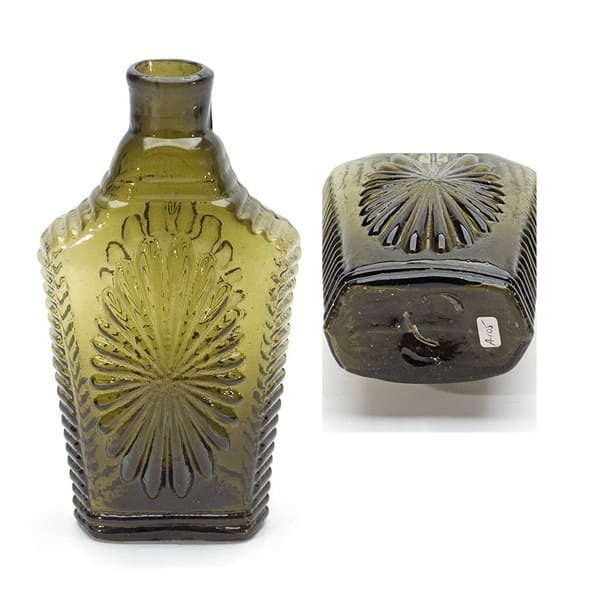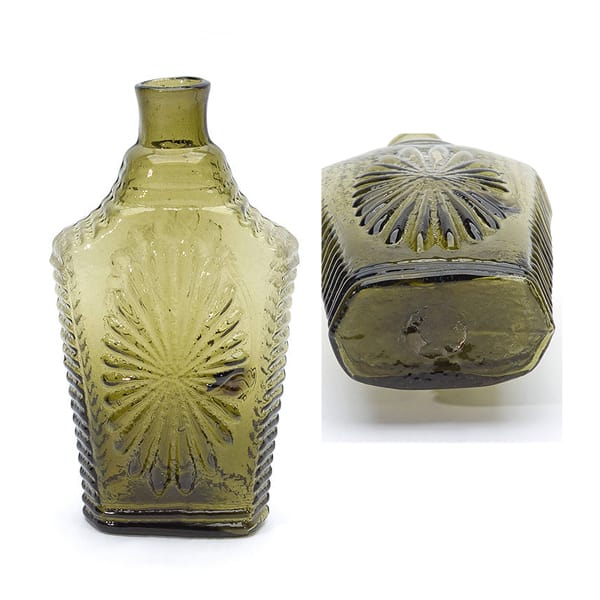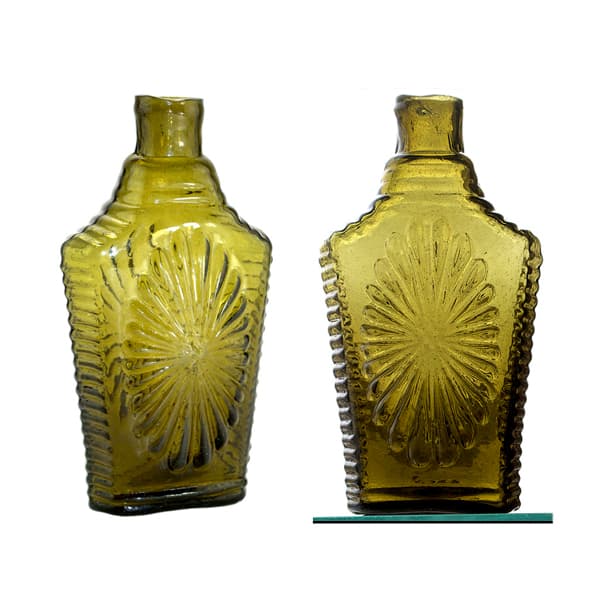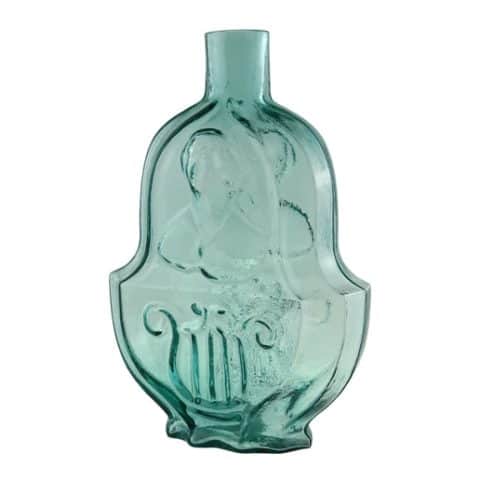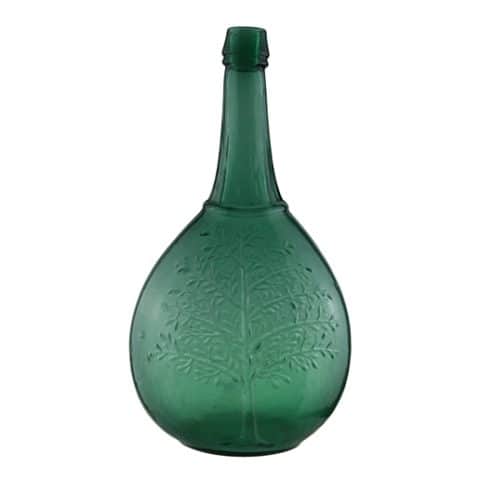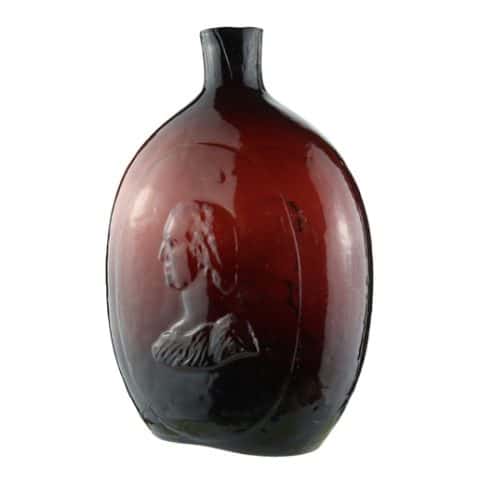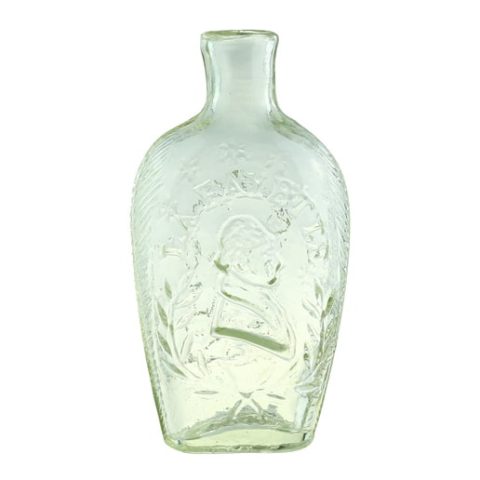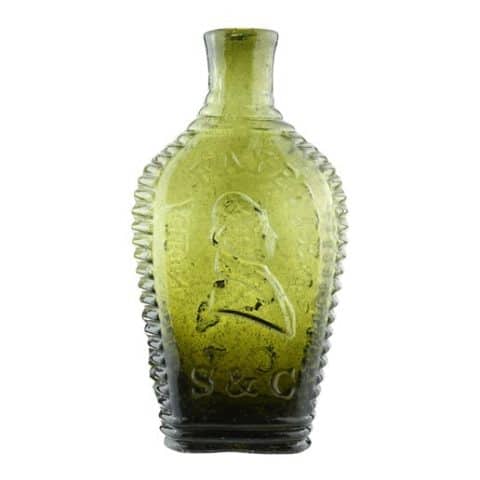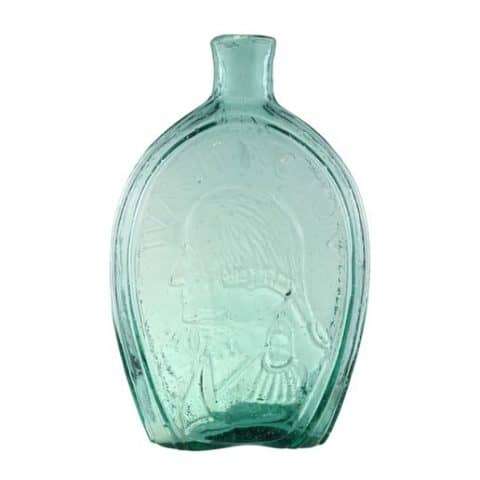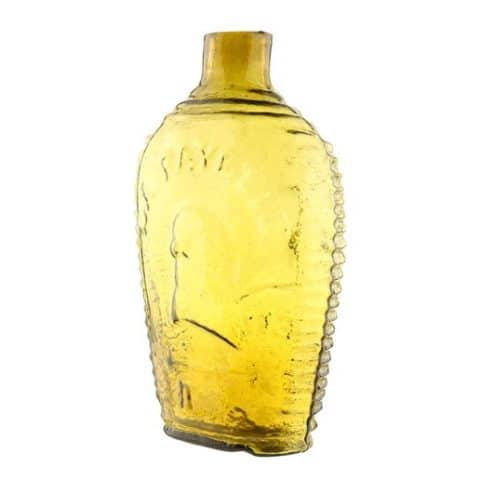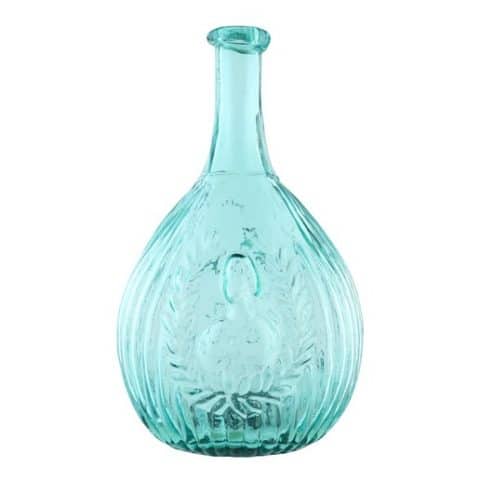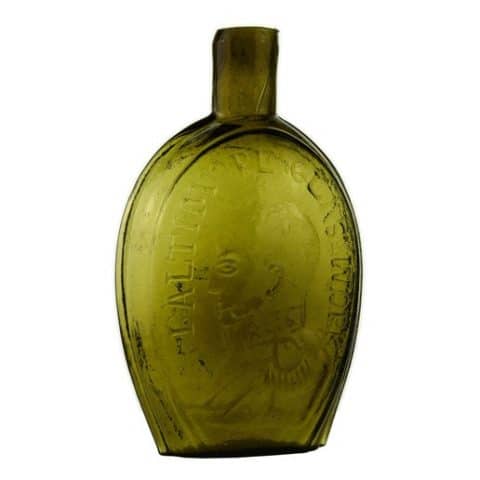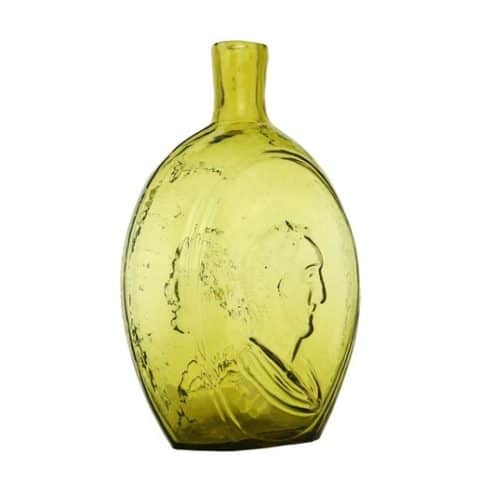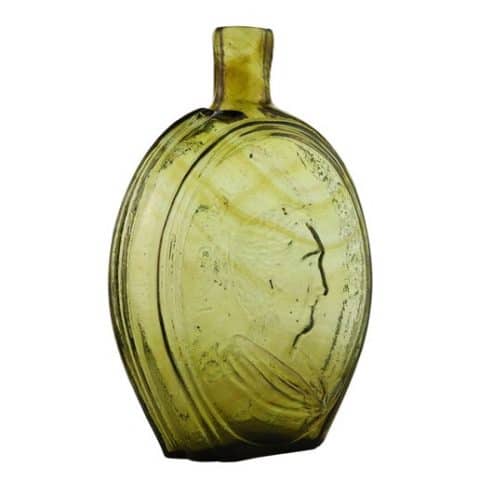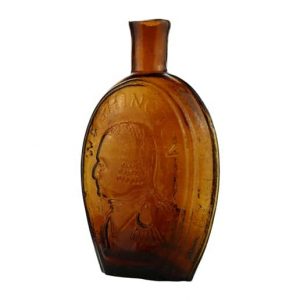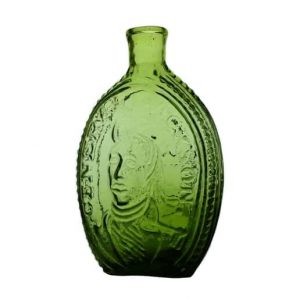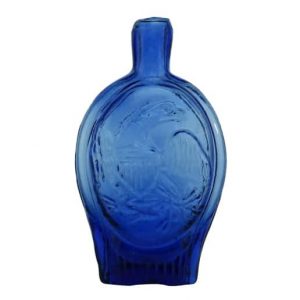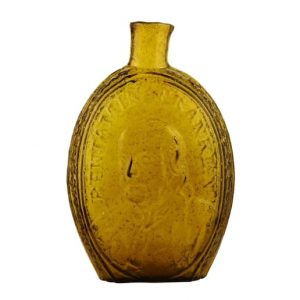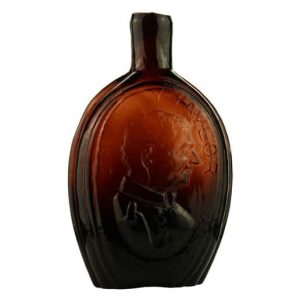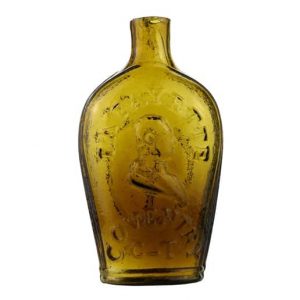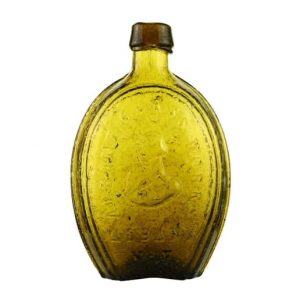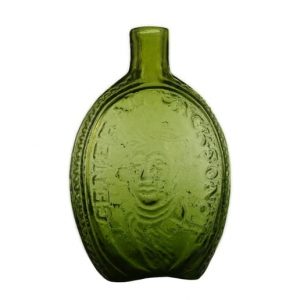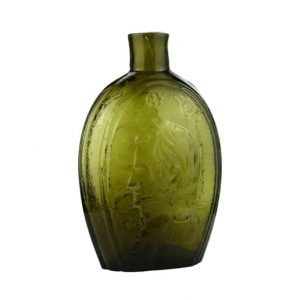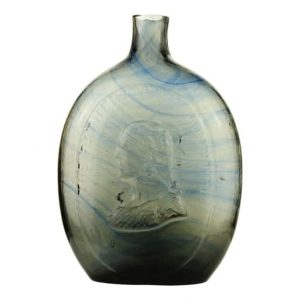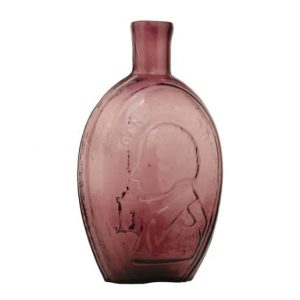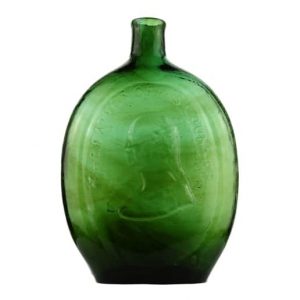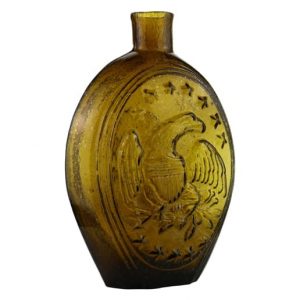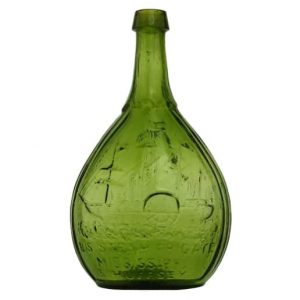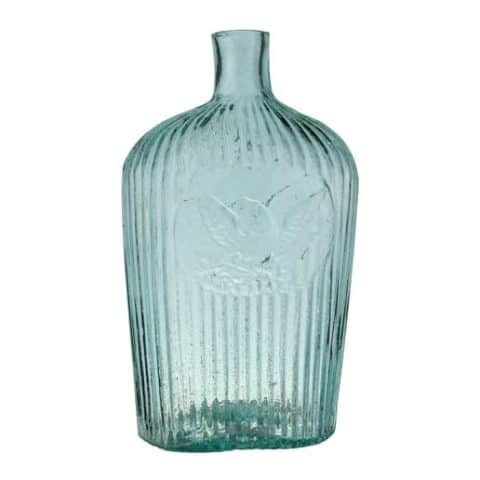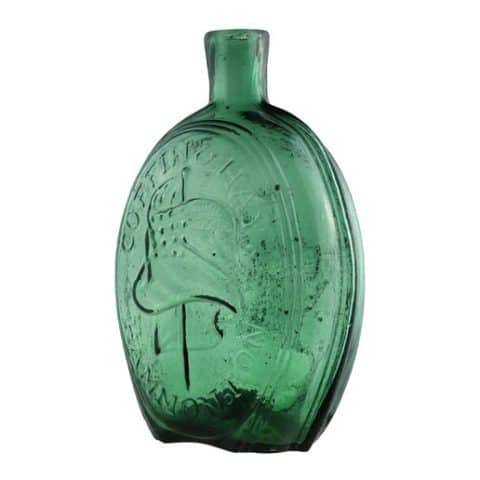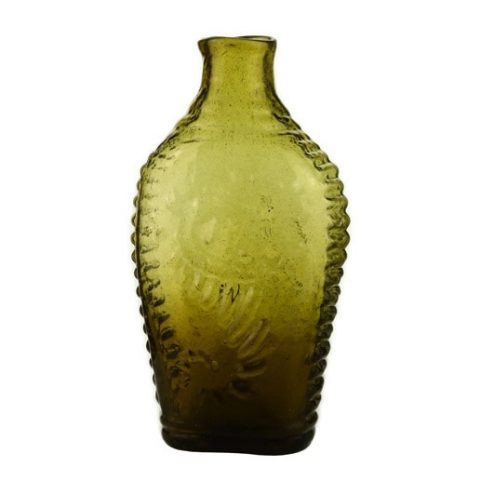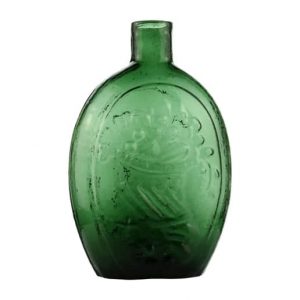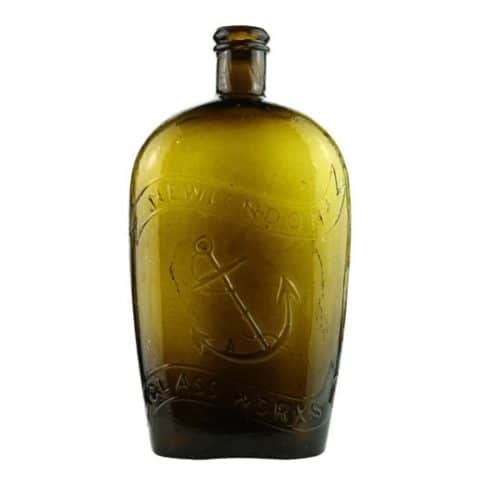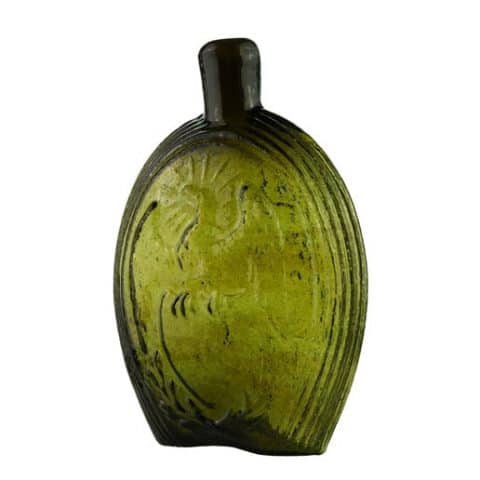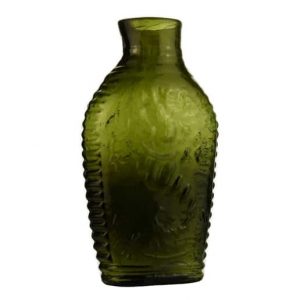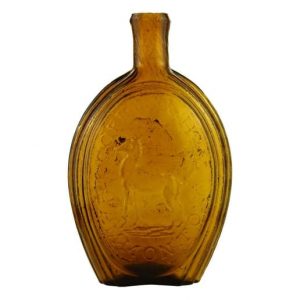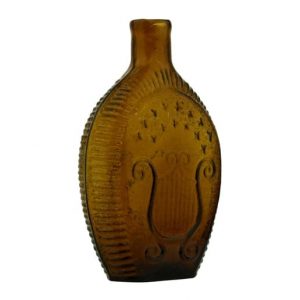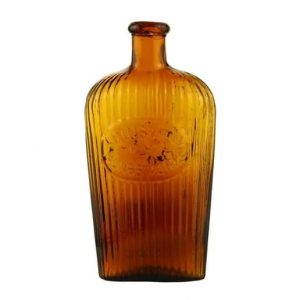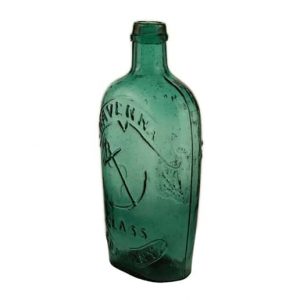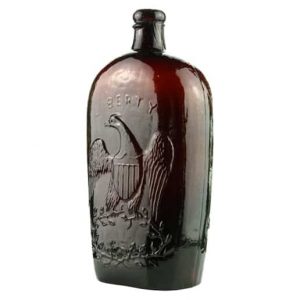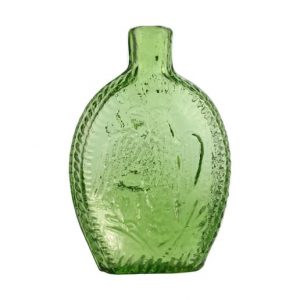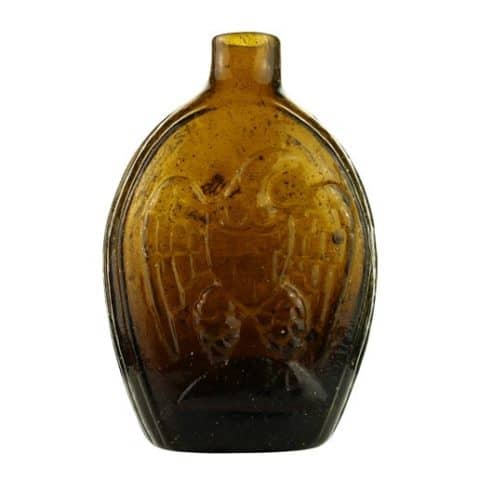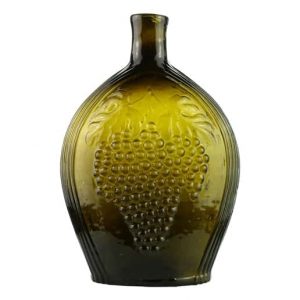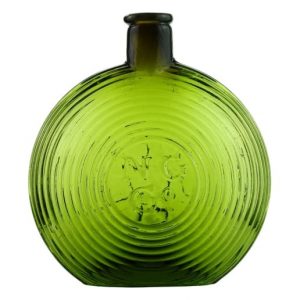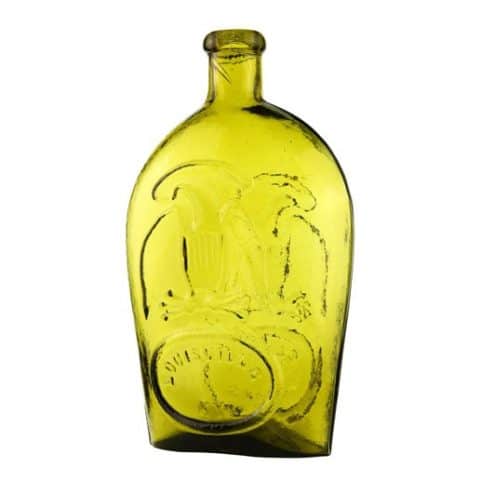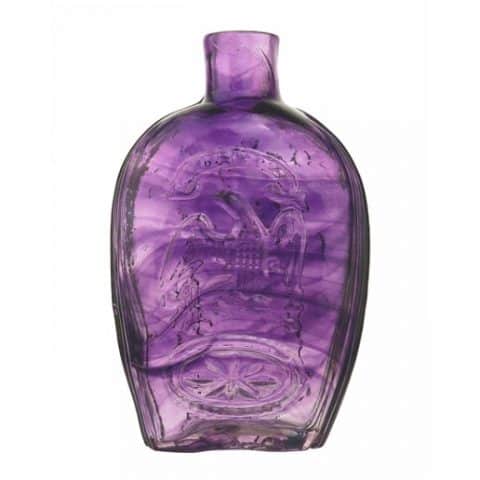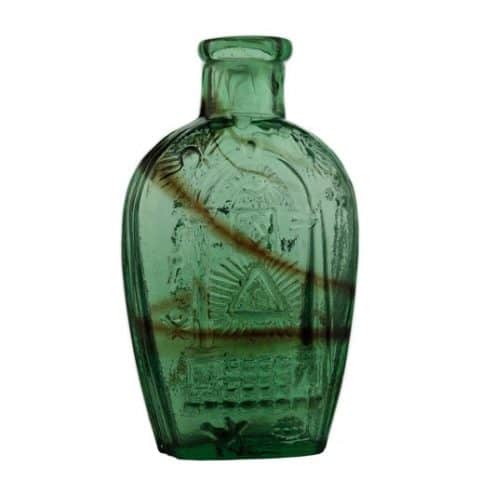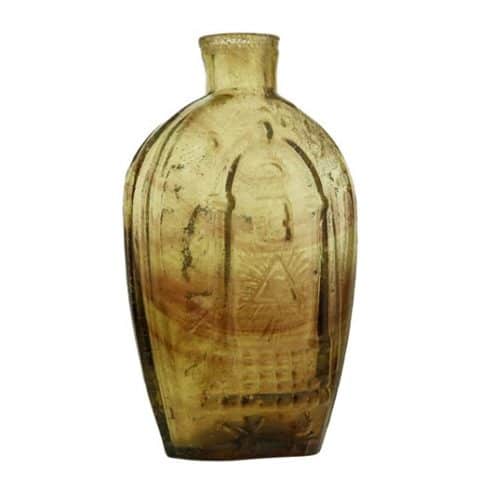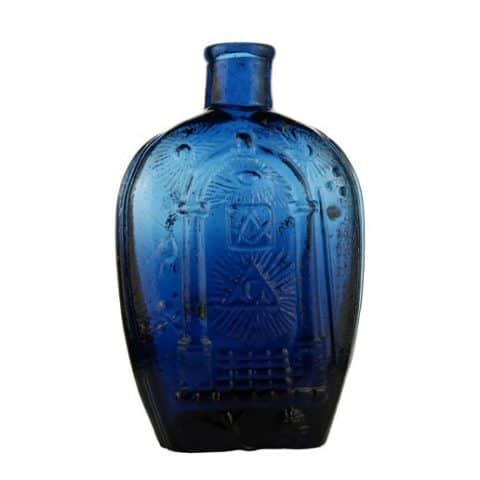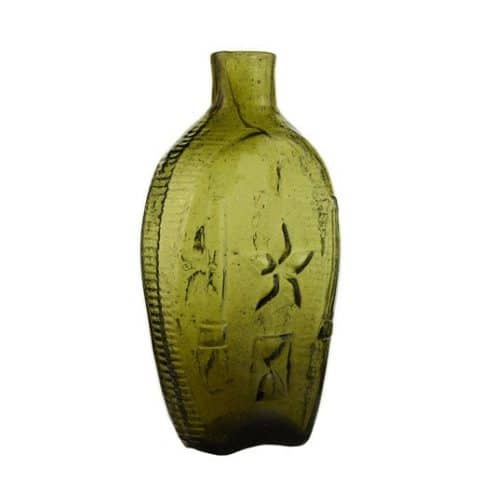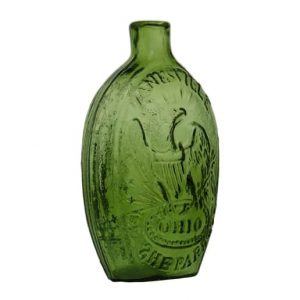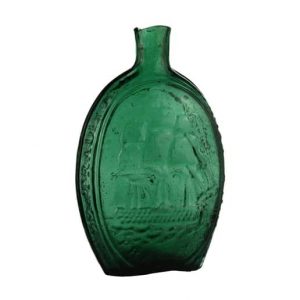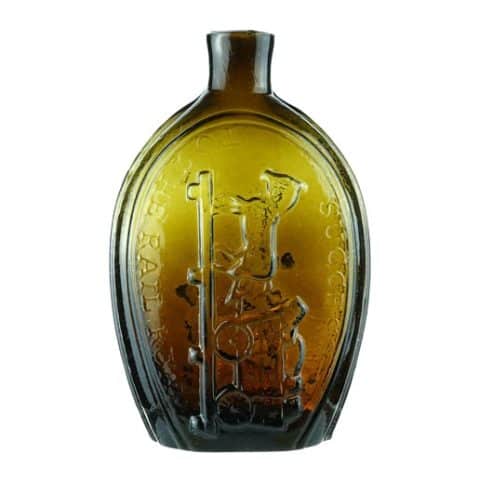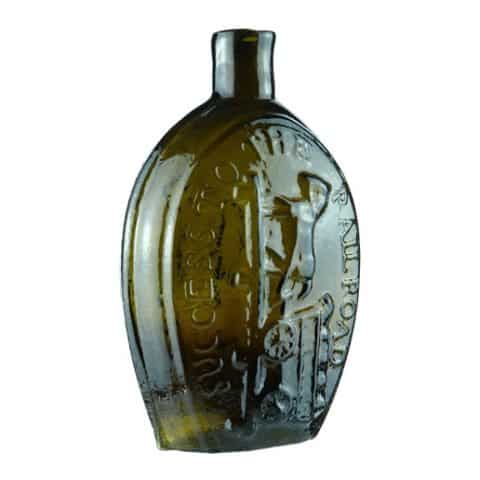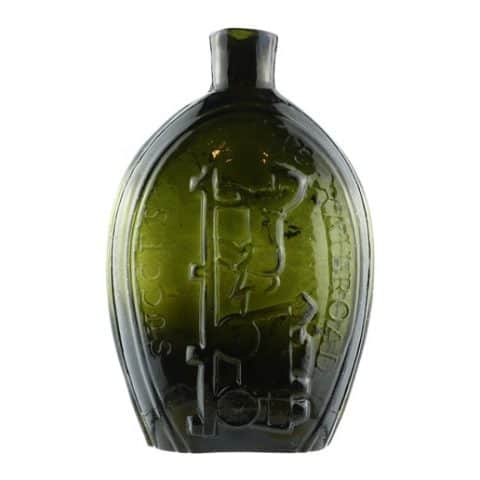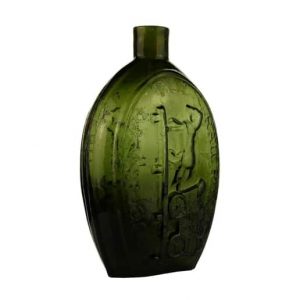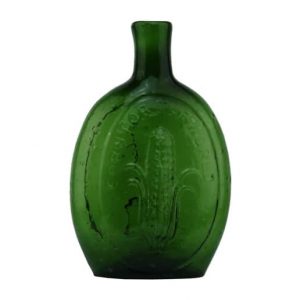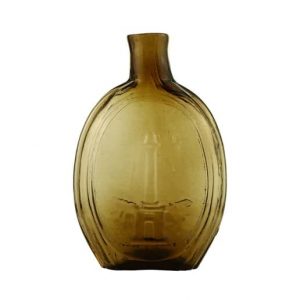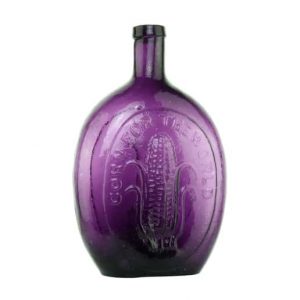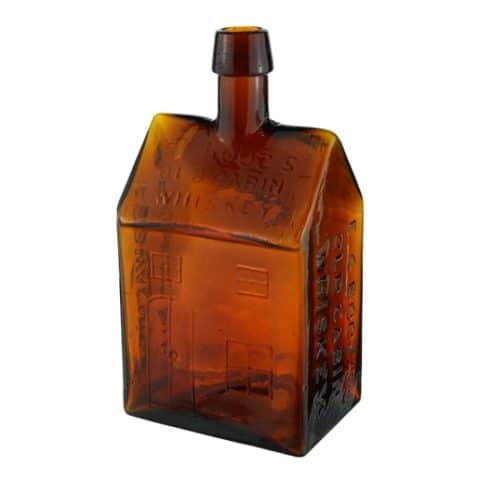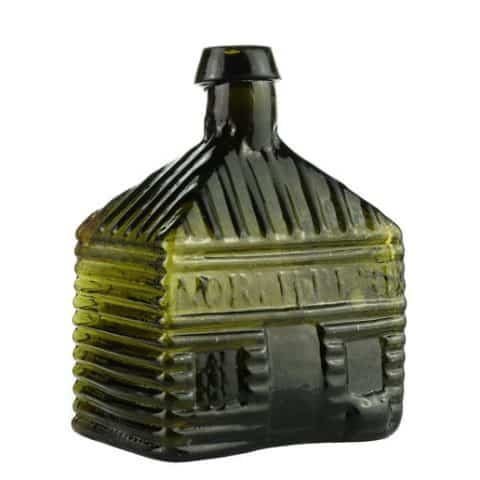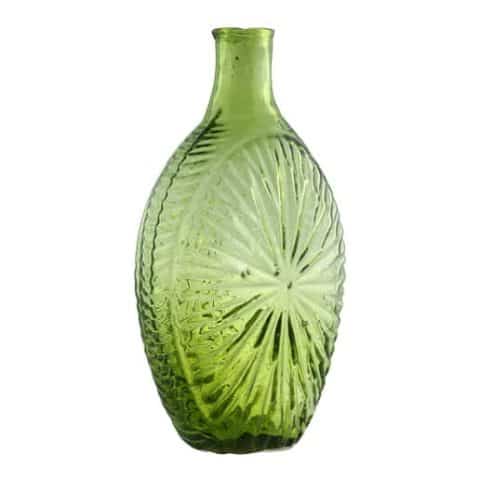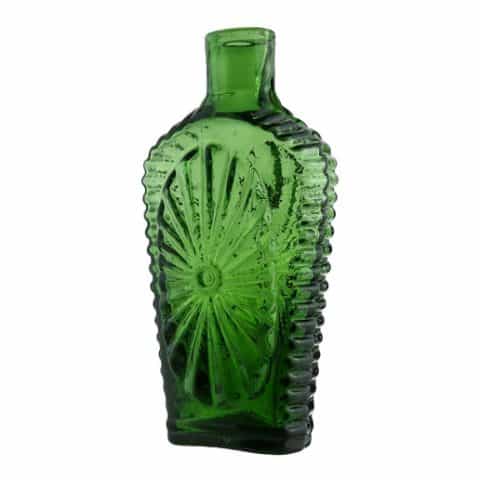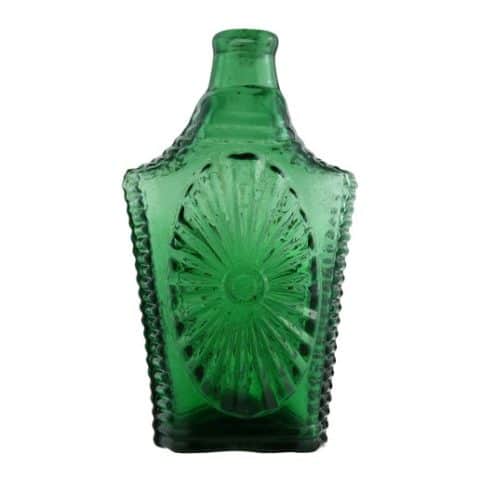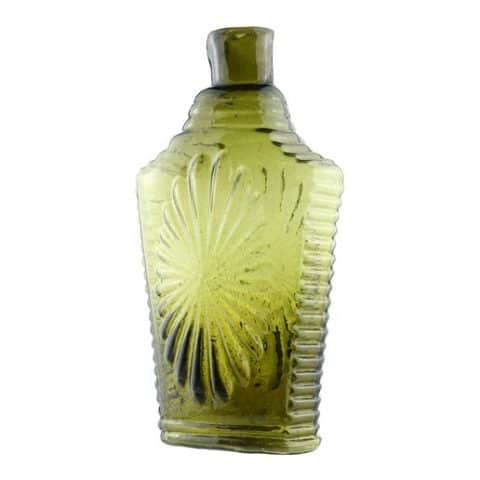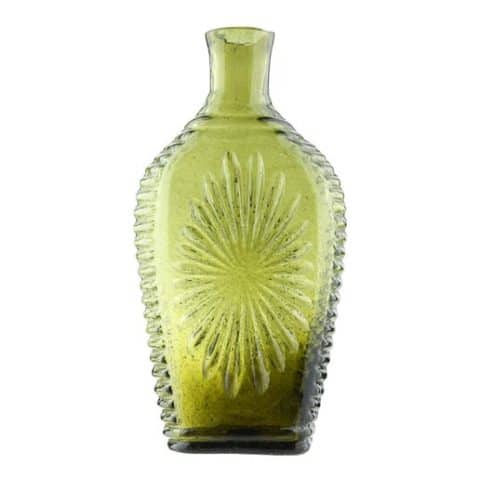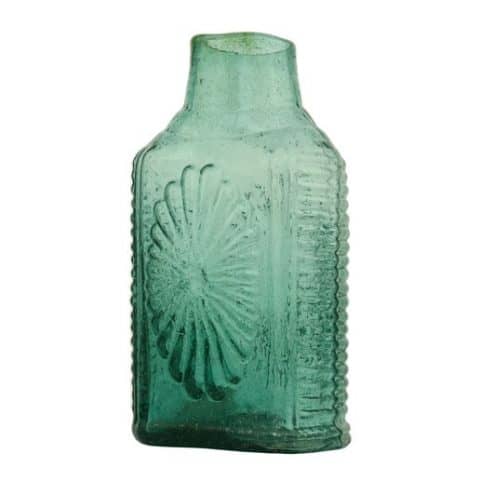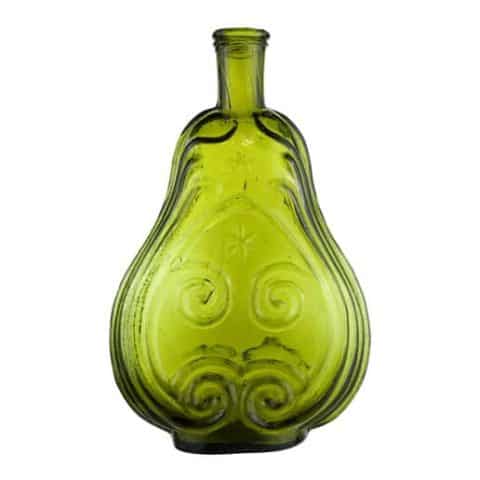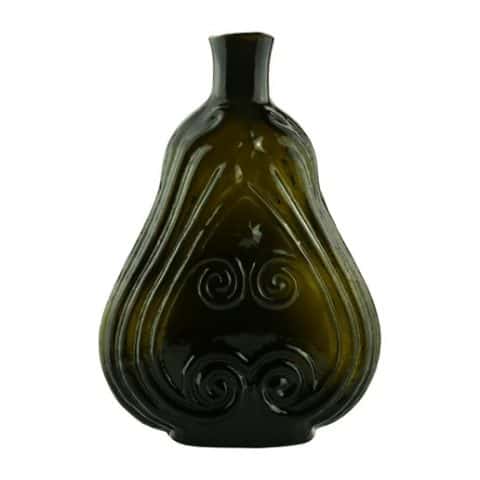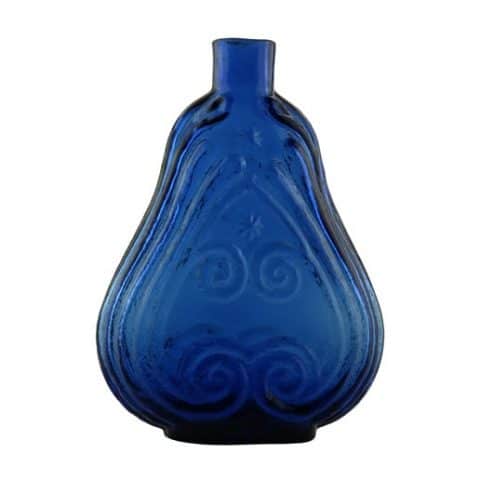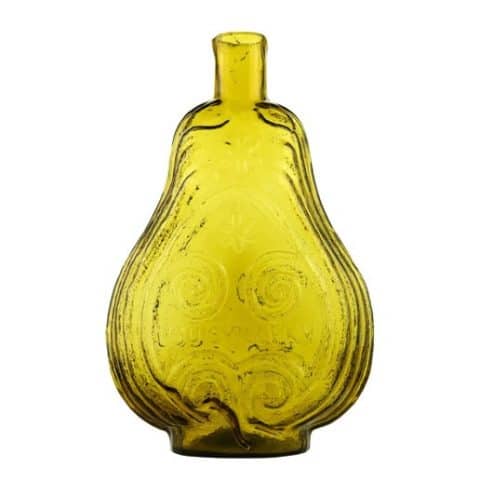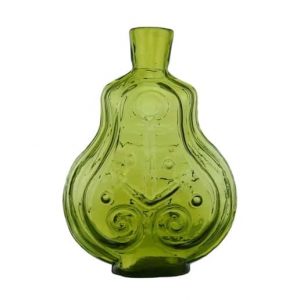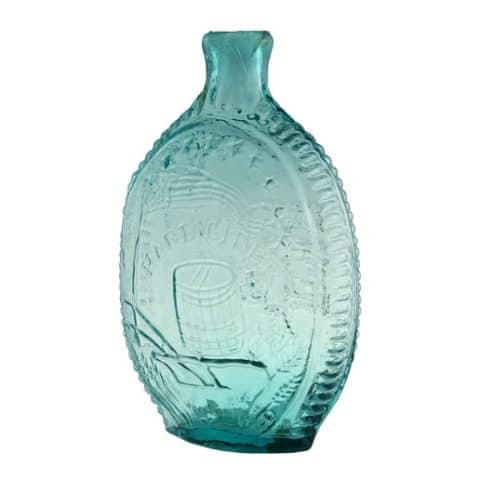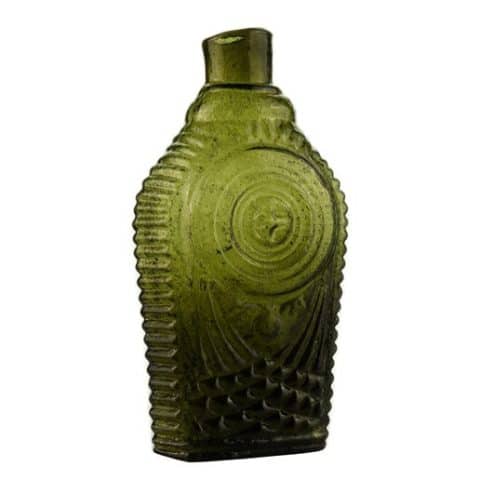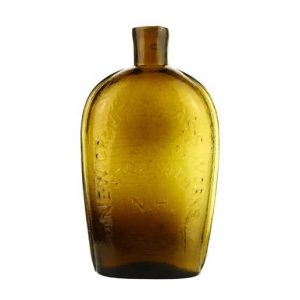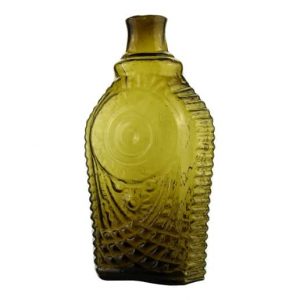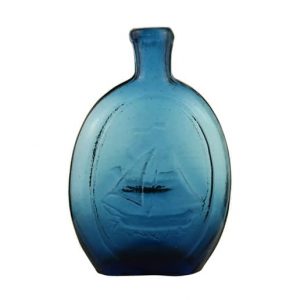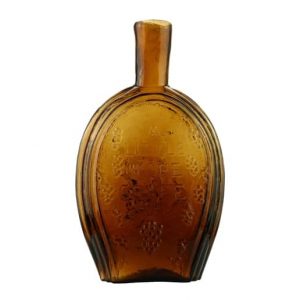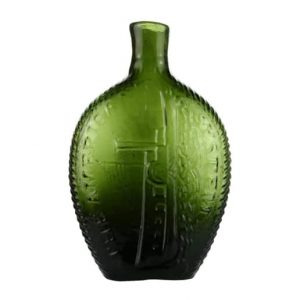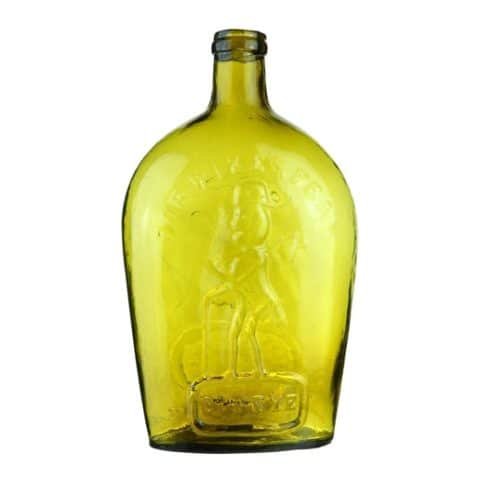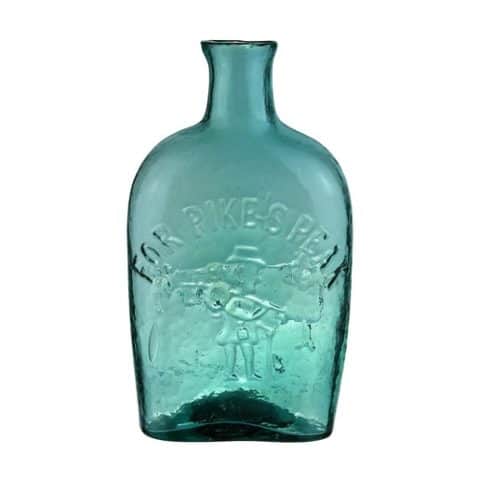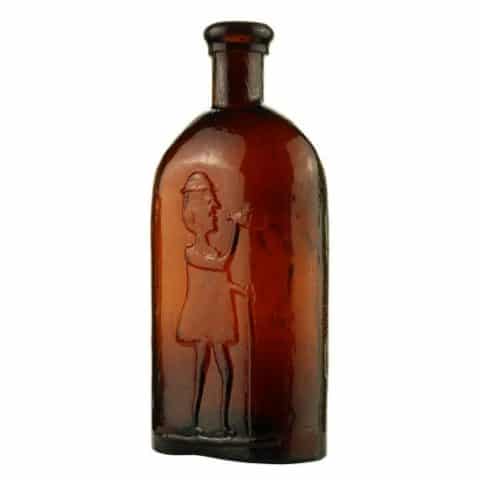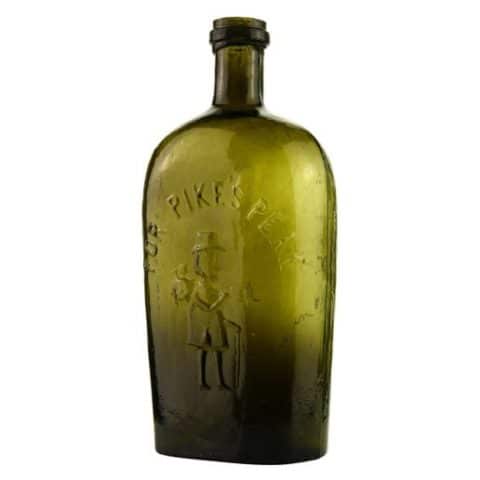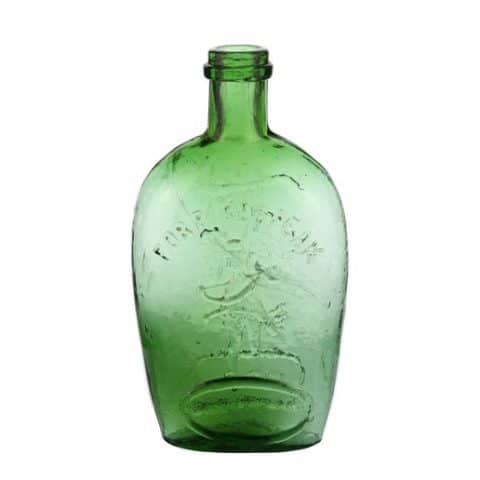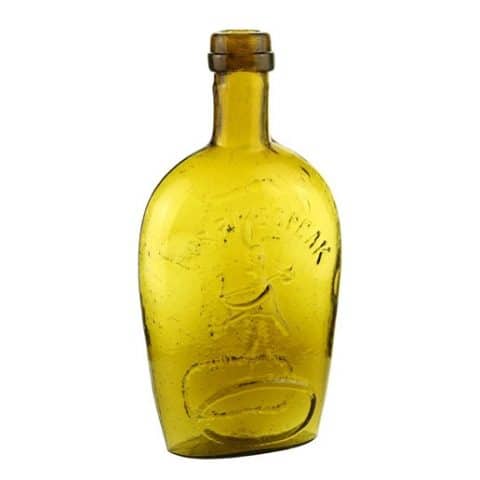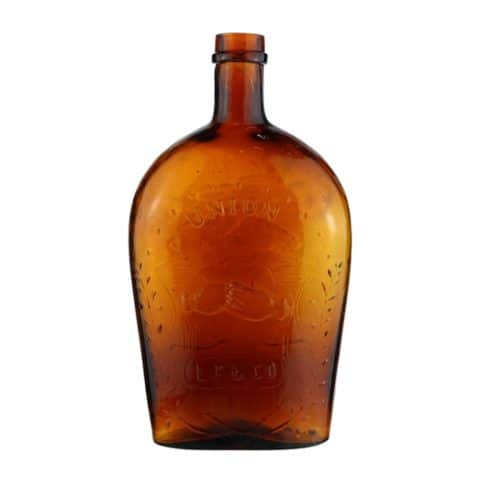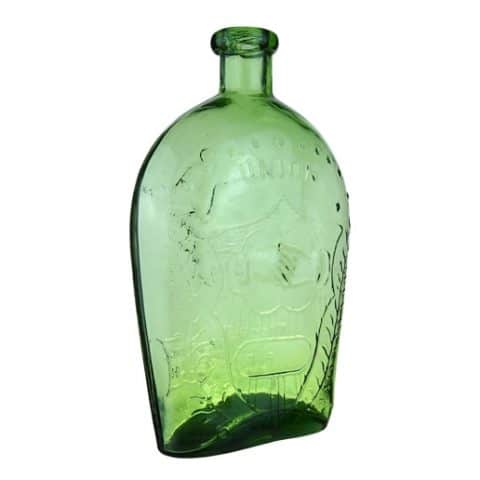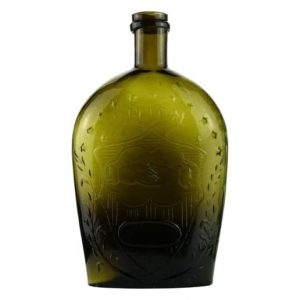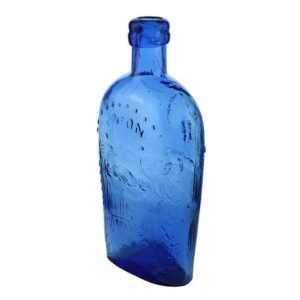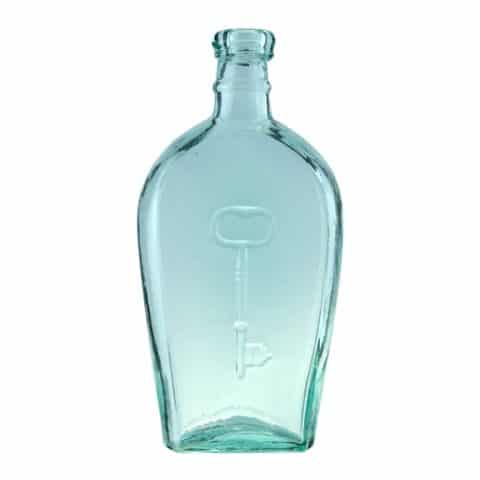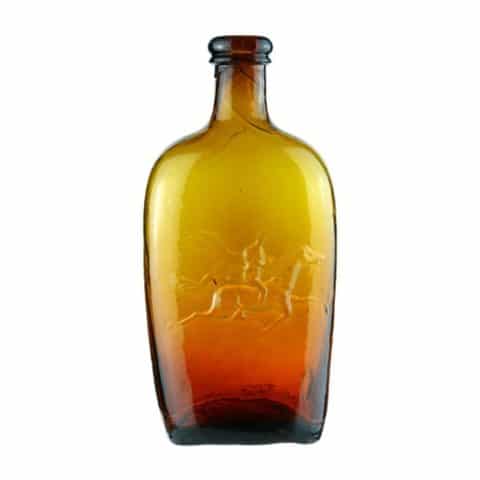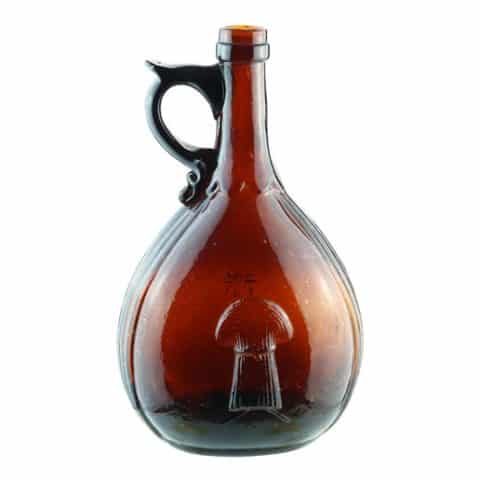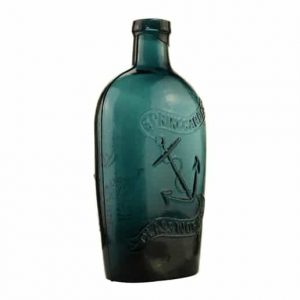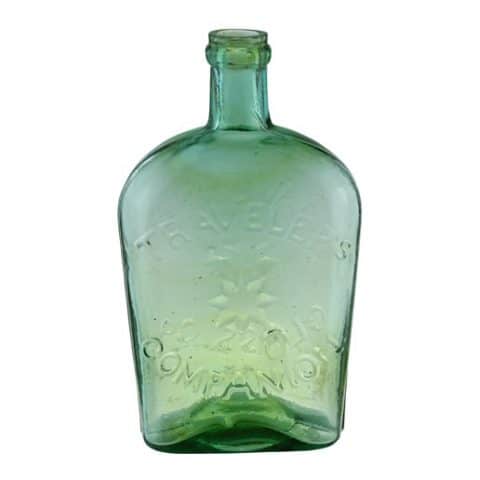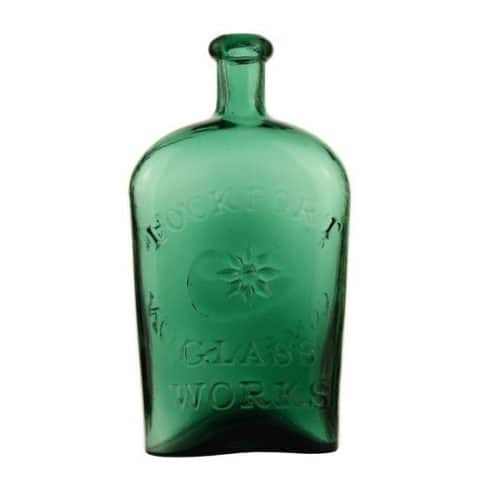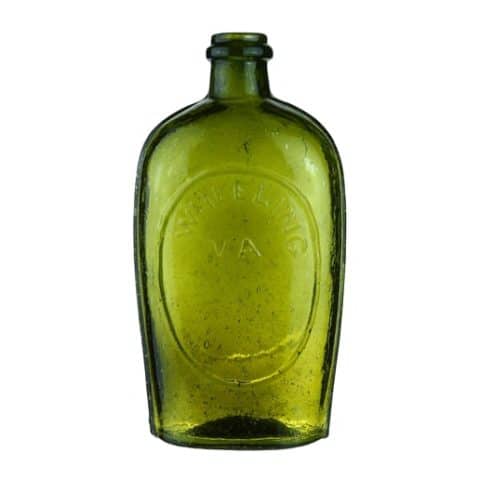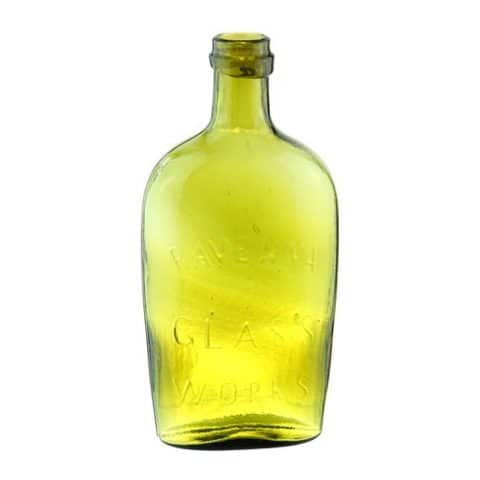GVIII-3 • Sunburst Flask
GVIII – 3
Sunburst Flask
Attributed to Coventry Glass Works, Coventry, Connecticut
Yellow Olive Pint
Provenance: Richard S. Ciralli Collection
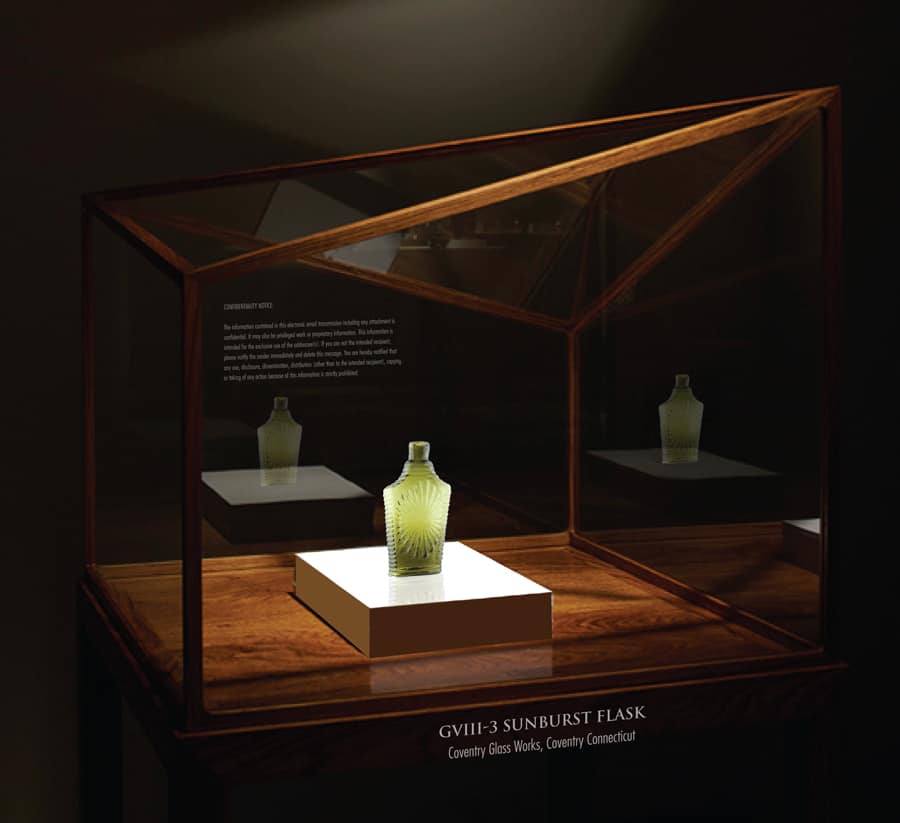
Our museum example represents a pint GVIII-3 Sunburst Flask that is considered the best of its type in terms of color, lack of wear, and the strength of impression. The consignor noted that it came from an old-time Ohio collection. The glass color is best described as a clear light yellow-olive. The flask is attributed to the Coventry Glass Works in Coventry Conn. and was made from 1810 to 1815.
Sunburst flasks are considered one of the oldest of the American “geometric” and “historical” flasks and are generally attributed to the period of 1810 to the early 1830s. This dating results from historical research, glasshouse excavations, and the manufacturing techniques of the flasks. The sunburst flasks are all made with two-piece molds with pontil scarred bases and most having sheared mouths. Except for the letter embossing on three forms, the sunburst pattern that occurs on both sides of the flask forms is essentially identical. The examples below represent Connecticut Sunburst Flasks.
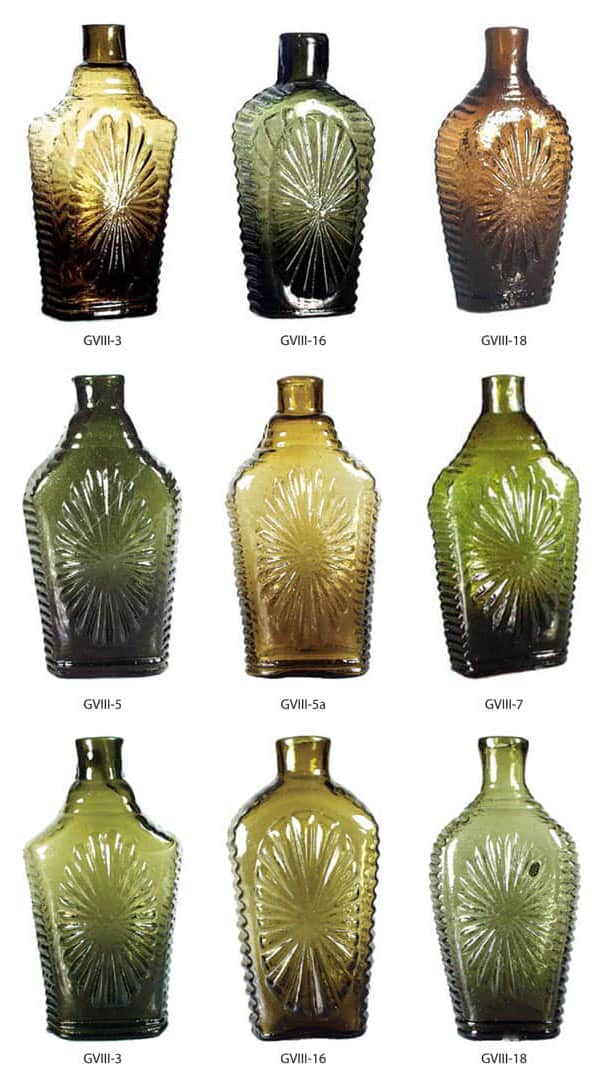
With many types of antique bottles and flasks, such as bitters, sodas, and medicines, the embossed names, products and locations, advertising, and paper labels greatly assist with historical research and identifying the bottle. Very limited historical information is available for sunburst flasks because they are from the early periods of the glasshouses when good records were not maintained, or records were destroyed in glasshouse fires. As noted previously, only three of the approximately thirty-three sunburst charted flasks are letter embossed. There were no paper labels on the sunburst flasks because they were purchased without contents and then filled and refilled in bars and saloons.
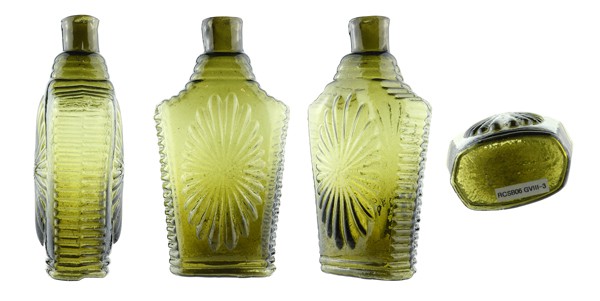
Our GVIII-3 Sunburst Flask features a large elliptical sunburst (about 4-¼” x 2-½”) on both sides with twenty-four rounded rays rounding down to the surface of the flask and forming a scalloped ellipse giving a raised sunburst effect. The flask edges are horizontally corrugated extending around the flask at the base and also between the neck and shoulder. The flask is found with a plain lip and pontil mark. The comparatively scarce flask has been found in clear amber, olive-amber, golden amber, yellow-olive, and olive green. This flask is very similar to GVIII-1 and GVIII-2 in shape but is somewhat smaller and lighter in weight.
See the museum example of a GVIII-18 Sunburst Flask attributed to Coventry Glass Works.
Coventry Glass Works
Seven men agreed to erect a glass factory in Coventry, Connecticut on January 14, 1813, along the Willimantic River. Four of the men, Captain Nathaniel Root, Ebenezer Root Nathaniel Root Jr., and Joseph A. Norton all of Coventry were not glassmakers. The other three included Eli Evans, Thomas W. Bishop, and Uriah Andrews, glassblowers from East Hartford that had the experience to run the day-to-day operations. Eli, Thomas, and Uriah were to use their expertise where needed in the glass factory and be compensated at $26 per month and $45 for each year they worked in the plant.
In 1816, there was an agreement to expand by adding buildings. Thomas Stubbins was operating the glassworks by 1820. Lafayette flasks having embossed “T.S.” were made sometime around 1825. The brother of Thomas may have entered the business sometime in 1825. The “S.S.” on some Lafayette flasks could be the entry of a brother to the glassworks or possibly a mistake. Later in 1825, Rufus B. Chamberlain joined the firm and they were now Stebbins & Chamberlin. The “S & C” is found on some flasks. In 1828, Jasper Gilbert, John Turner, and Rufus B. Chamberlain with John Turner’s brother Levi took control forming Gilbert Turner & Company. Lack of wood is said to be the reason for the glassworks closing in 1848, but accounting books seem to indicate sales into 1849.
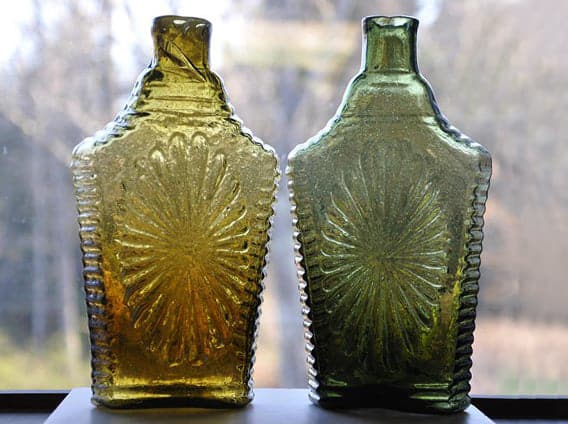
Support: GVIII-3 Sunburst Flask imaged on location by the FOHBC Virtual Museum midwest studio led by Alan DeMaison.
Support: Reference to American Bottles and Flasks and Their Ancestry by Helen McKearin and Kenneth M. Wilson, Crown Publishers Inc., New York, 1978.
Support: Reference to The Museum of Connecticut Glass.
Support Image: Auction Lot 2: Sunburst Flask, Coventry Glass Works, Coventry, Connecticut, 1815-1830. Brilliant yellow olive, sheared mouth – pontil scar, pint. GVIII-3 A particularly crisp, clean example in a beautiful bright color. Fine condition. Robert and Janice Weekes collection. – Norman Heckler Jr. & Sr., Norman C. Heckler & Company, Auction #164
Support Image: Auction Lot 16: Sunburst Flask, Coventry Glass Works, Coventry, Connecticut, 1815-1830. Bright yellow-olive, sheared mouth – pontil scar, pint; (just a hint of exterior high point wear). GVIII-3 An exceptional example in a beautiful, light color. Fine condition. – Norman Heckler Jr. & Sr., Norman C. Heckler & Company, Auction #187
Support Image: Auction Lot 156: Sunburst Flask, (GVIII-3), Coventry Glass Works, Coventry Connecticut ca. 1815 – 1835, medium yellowish olive pint, open pontil, sheared, and tooled lip. Some moderate-high point wear is on some of the ‘rays’, otherwise in overall excellent condition. – Jim Hagenbuch, Glass Works Auctions, November 2020
Support: Reference to The Keen Embossed and Similar Sunburst Flasks by Bill Ham, Antique Bottle & Glass Collector, August 1984, Connecticut Sunburst Flasks by Bill Ham, Antique Bottle & Glass Collector, November 1985, More on Sunburst Flasks by Bill Ham, Antique Bottle & Glass Collector, January 1988 and Sunburst and Similar Scents by Bill Ham, Antique Bottle & Glass Collector, May 1988
Support Image: Two GVIII-3 Sunburst Flasks from the Mike Brauser collection.
Join the FOHBC: The Virtual Museum is a project of the Federation of Historical Bottle Collectors (FOHBC). To become a member.

